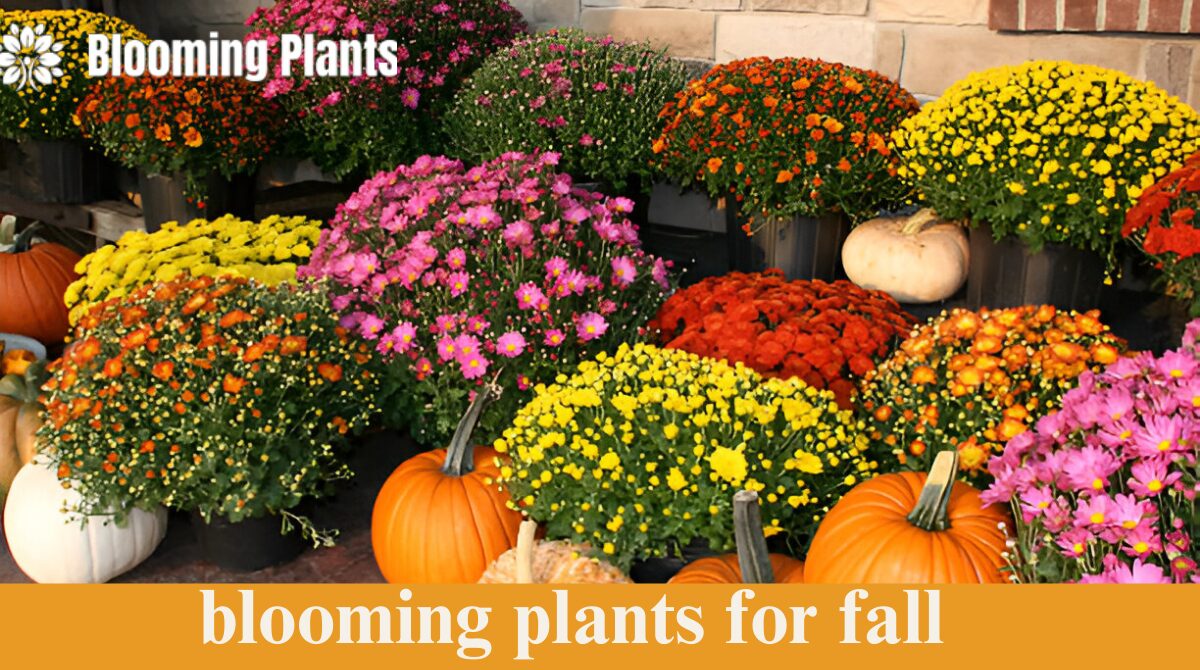Fall is a magical season for gardening enthusiasts. The crisp air, vibrant foliage, and changing landscapes create the perfect backdrop for blooming plants that thrive in autumn. While many plants slow down as summer ends, countless varieties come alive during fall, offering rich colors, unique textures, and an extended gardening season.
In this comprehensive guide, we’ll explore everything you need to know about blooming plants for fall. From selecting the right flowers and understanding their growth habits to designing a garden that flourishes in cooler months, this article has you covered.
Why Choose Blooming Plants for Fall?
Fall-blooming plants add charm and variety to your garden. Here’s why they’re essential:
- Extended Beauty: These plants prolong the life of your garden, offering vibrant colors when other flowers fade.
- Pollinator-Friendly: Many fall bloomers provide nectar for bees and butterflies before winter.
- Low Maintenance: Cooler weather often means fewer pests and reduced watering needs.
Best Blooming Plants for Fall
Chrysanthemums (Mums)
- Why They’re Perfect for Fall: Known for their stunning blooms, mums are a staple for fall gardens. They come in various colors, including yellow, red, white, and orange, making them versatile for any design.
- Care Tips:
- Plant in well-drained soil.
- Provide 6 hours of sunlight daily.
- Deadhead spent blooms to encourage more flowers.
Asters
- Description: Asters are daisy-like flowers that bloom in late summer and throughout fall. Their vibrant purple, blue, and pink hues create a striking contrast with autumn foliage.
- Care Tips:
- Ensure full sun to partial shade.
- Water consistently, especially during dry spells.
- Mulch to retain soil moisture.
Goldenrod
- Benefits: Often mistaken for a weed, goldenrod is a beautiful, vibrant yellow plant that attracts pollinators.
- Interesting Fact: Thomas Edison used goldenrod to produce rubber during World War II.
- Care Tips:
- Tolerates poor soil conditions.
- Thrives in full sun.
- Space plants to prevent overcrowding.
Sedums (Stonecrop)
- Why Sedums Stand Out: Their fleshy leaves and clusters of flowers make sedums a unique choice for fall gardens. Popular varieties include ‘Autumn Joy.’
- Care Tips:
- Requires minimal water.
- Prefers sunny spots.
- Divide every 3-4 years to maintain vigor.
Japanese Anemones
- Features: Delicate yet hardy, these flowers add an elegant touch with their pastel shades of pink and white.
- Care Tips:
- Plant in moist, well-drained soil.
- Provide partial shade.
- Protect from strong winds.
Designing a Fall Garden
Color Schemes for Fall
- Combine warm tones like red, orange, and yellow with cooler shades of purple and white for balance.
- Use complementary colors to create striking contrasts.
Layering Plants
- Tall Plants: Use goldenrod and Japanese anemones as backdrops.
- Medium Height: Incorporate mums and asters.
- Ground Cover: Add sedums for texture.
Adding Seasonal Accents
- Use pumpkins, hay bales, and rustic containers to enhance the fall aesthetic.
- Integrate fall foliage, such as red maple leaves, to complement blooming plants.
Caring for Fall-Blooming Plants
Watering Needs
- Fall plants generally require less water. Check soil moisture weekly and water deeply when needed.
Fertilizing
- Use a balanced fertilizer early in the season to encourage blooming. Avoid excessive nitrogen, which can promote leafy growth over flowers.
Pruning and Deadheading
- Remove spent blooms to encourage new flowers. Prune perennials after flowering to prepare them for winter dormancy.
Common Pests and How to Manage Them
Aphids
- Symptoms: Yellowing leaves and stunted growth.
- Solution: Spray plants with a mixture of water and dish soap.
Powdery Mildew
- Symptoms: White, powdery spots on leaves.
- Solution: Use a fungicide or neem oil spray.
Snails and Slugs
- Symptoms: Holes in leaves.
- Solution: Set up beer traps or sprinkle diatomaceous earth around plants.
Case Study: Transforming a Summer Garden into a Fall Oasis
Background: A homeowner in Pennsylvania wanted a vibrant garden for fall after her summer plants faded.
Solution: She planted a mix of mums, asters, and goldenrods, complemented by decorative pumpkins and corn stalks. She created a stunning autumn display by layering plants of different heights and adding mulch.
Results: Her garden remained colorful and inviting until the first frost, drawing compliments from neighbors and serving as a haven for pollinators.
Table: Ideal Fall-Blooming Plants at a Glance
| Plant Name | Bloom Color | Light Requirement | Soil Type | Key Care Tip |
| Chrysanthemums | Yellow, Red, White | Full Sun | Well-Drained | Deadhead for more blooms |
| Asters | Purple, Blue, Pink | Full Sun to Part Shade | Moist, Well-Drained | Mulch to retain moisture |
| Goldenrod | Bright Yellow | Full Sun | Any Soil | Space to prevent crowding |
| Sedums | Pink, Rust | Full Sun | Sandy, Well-Drained | Minimal watering needed |
| Japanese Anemones | Pink, White | Part Shade | Moist, Well-Drained | Protect from winds |
FAQs About Blooming Plants for Fall
What are the best soil conditions for fall-blooming plants?
Most fall plants thrive in well-drained soil with moderate fertility. Adding organic matter can improve soil structure and nutrition.
Can I grow fall-blooming plants in containers?
Yes! Many fall plants, like mums and asters, do well in pots. Ensure proper drainage and use high-quality potting soil.
How do I protect fall plants from frost?
Cover plants with burlap or frostcloth during cold nights. Mulching also helps retain heat in the soil.
Conclusion
Fall is a season of transition, but it doesn’t have to mean the end of gardening. With the right blooming plants, your garden can be a vibrant and welcoming space all season long. From the bright yellows of goldenrod to the soft pastels of Japanese anemones, fall plants bring life, color, and texture to any outdoor space.
So, why not start planning your fall garden today? You can enjoy a blooming paradise that lasts well into the cooler months with some care and creativity. 🌼

